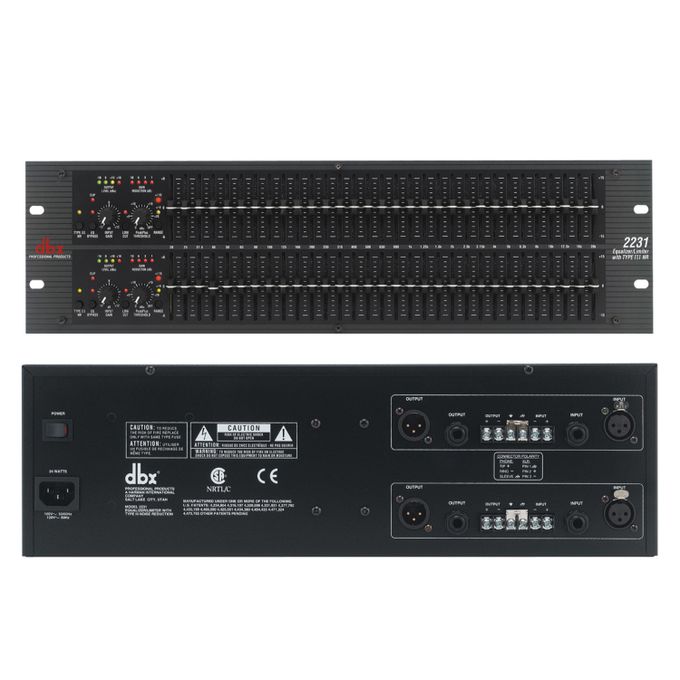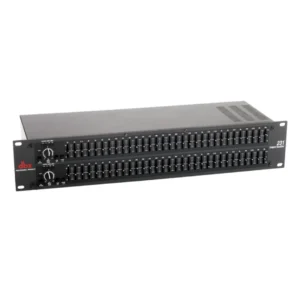The dbx 2231 is a highly regarded piece of audio processing equipment designed to give sound engineers granular control over the frequency spectrum of an audio signal, while also providing essential dynamic management features.
Core Functionality: Graphic Equalization
Dual-Channel, 31-Band Operation: The 2231 features two independent channels, each equipped with 31 bands of 1/3-octave equalization. This means it can adjust frequencies from 20 Hz to 20 kHz with precision, allowing for detailed adjustments to address room acoustics, correct feedback, or creatively shape the tonal character of any audio source.
1/3-Octave Bands: The 1/3-octave spacing of the bands provides a balanced and detailed control over the audio frequencies, enabling nuanced shaping.
Selectable Boost/Cut Ranges: Users can typically switch between two boost/cut ranges for each frequency band: ±6 dB for subtle adjustments or ±15 dB for more aggressive equalization.
45mm Sliders: The unit features durable 45mm center-detented sliders for each frequency band, providing tactile feedback and precise control.
Integrated Dynamic Processing:
PeakPlus™ Limiter: This sophisticated limiter is engineered to manage dynamic range. It can transparently control sudden loud peaks or subtle nuances in program material. The threshold range is adjustable, typically from 0 dBu to +24 dBu (off), offering flexibility in preventing clipping and distortion without overly “squashing” the audio.
Type III® Noise Reduction: This is a signature dbx technology. It employs an instantaneous encode/decode process within the unit’s circuitry to actively reduce system noise by up to 20 dB. This allows engineers to reduce unwanted hiss or hum without resorting to drastic EQ cuts that could compromise the desired audio frequencies.
Additional Features and Connectivity:
±12 dB Input Gain Range: This allows for easy matching of various input signal levels to the equalizer’s optimal operating range.
High-Pass Filter (Low Cut): A recessed switch activates an 18 dB/octave Bessel high-pass filter at 40 Hz, useful for removing unwanted low-frequency rumble or mud without affecting the main audio content.
Comprehensive Metering:
Output Level LEDs: A four-segment LED ladder provides visual feedback on the output level of each channel.
Gain Reduction LEDs: Another four-segment LED ladder shows how much the PeakPlus™ limiter is currently reducing the gain.
Status LEDs: Front-panel LEDs indicate the status of various settings, such as Type III NR activation and EQ bypass, for quick visual confirmation.
Connectivity: The 2231 offers robust connectivity options, typically including:
Balanced XLR inputs and outputs
1/4″ TRS inputs and outputs
Barrier strip terminals for permanent installations.
These connections are electronically balanced and RF filtered to ensure clean signal transfer.
Rugged Construction: Built to withstand the demands of professional use, the 2231 features a sturdy chassis, often housed in a 3U rackmount size.
Applications:
The dbx 2231 is widely used in:
Live Sound Reinforcement: For tuning speaker systems, controlling feedback on stage, and shaping the overall sound for audiences.
Recording Studios: For precise tonal shaping of individual tracks or the master bus, and for noise reduction on older recordings or noisy signals.
Installed Sound Systems: In venues like churches, theaters, and conference rooms to optimize acoustic performance.
Broadcast and Post-Production: For fine-tuning audio for television, radio, and film.


Reviews
There are no reviews yet.